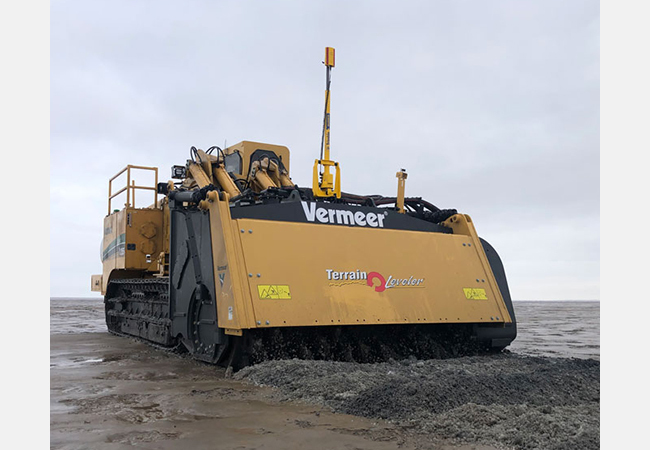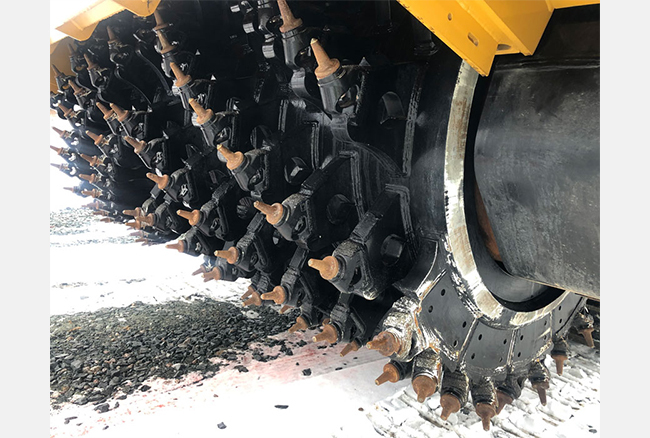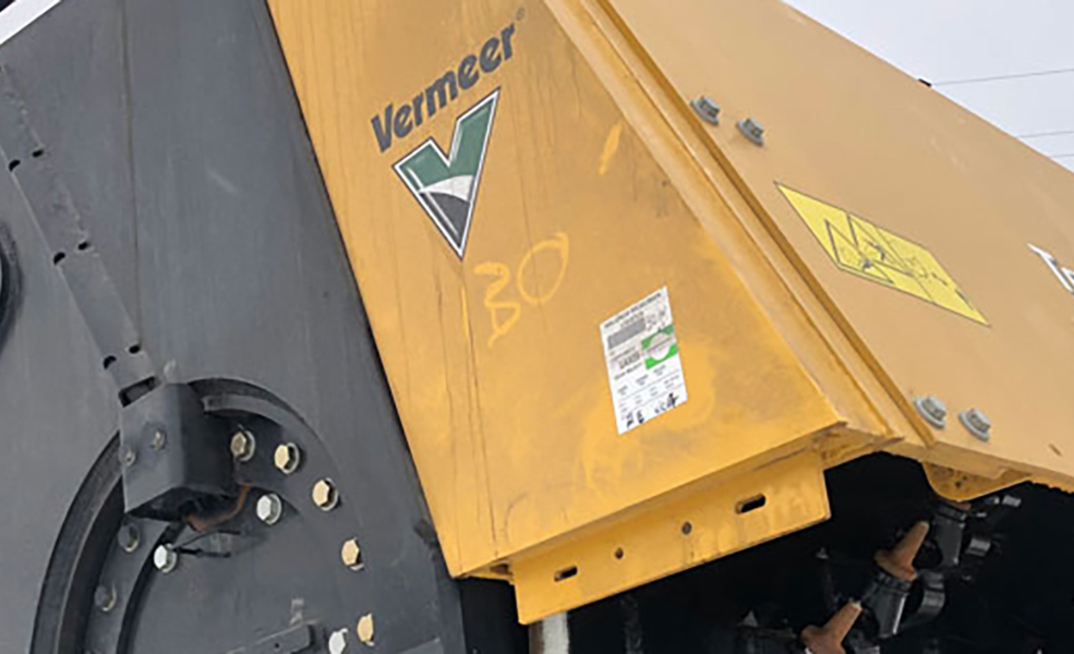80% of all Russian salt comes from Lake Baskunchak and its extraction is highly sophisticated.
Lake Baskunchak is one of nature's wonders. It lies in southwest Russia, within the Caspian Depression - a large semi-arid desert to the north of the Caspian Sea. Mineral-rich river water from an area the size of Jamaica drains into the lake, but none flows out. Under the hot sun, it all evaporates into the parched air above leaving behind a saline bounty. Salt from Lake Baskunchak was being mined and traded along the Silk Road as early as the eighth century. Today, 80% of all Russian salt comes from the lake and its extraction is a highly sophisticated, industrialized process.
"At its core, our mission is very simple: to provide our customers with table salt and industrial salt of the highest quality," says Aleksandr Goryankin, lead engineer at Russalt, the company responsible for the Baskunchak operation. "However, there's nothing simple about fulfilling that mission. Conditions at Baskunchak are technically demanding and we have to respect the environmental integrity of the area - the lake lies within an important nature reserve. As a company, we need to overcome the engineering and ecological challenges while remaining commercially competitive. In an increasingly global market, that implies constantly improving efficiency and reliability. So we're always looking to modernize our production and processing capabilities."
Russalt's strategic commitment to cutting-edge technology led to a fundamental review of the way salt is mined. Although it's called a lake, Baskunchak is not an open body of water. Millennia of inflow and evaporation have led to the formation of salt flats that are kilometers thick in places. Mining involves cutting a trench into the surface which subsequently refills with salty water when adjoining parts of the flats become waterlogged in the cooler months. Over time, fresh salt deposits form in the trench so that the area can be re-mined some years later. Unlike most mineral extraction operations, Baskunchak is fully sustainable - the salt is a self-replenishing resource.
For many decades, salt has been taken from the lake using a rail-mounted salt combine. A rail track is laid on a narrow causeway across the surface of the flats. The combine is a self-propelled truck that gradually edges forward on the rails. On one side of the causeway, the combine's excavation equipment lifts a mixture of mineral salt and water known as salty pulp. The pulp goes through the combine's onboard dehydration system and then passes into a crusher. Finally, the crushed salt is ejected into wheeled-hopper vehicles on the unexcavated dry side of the causeway while excess water is pumped back into the excavation trench on the other side.
"It's an approach that's served us well," explains Aleksandr Goryankin. "But circumstances change, and the way we work has to change. The rail combine is designed to remove everything down to a depth of several meters. After processing the purest salt, which is found near the surface, goes for human consumption, while the lower deposits are used for technical applications, such as road gritting. However, the deeper the excavation trench is, the longer you must wait for new, commercially exploitable deposits to form. And, with demand growing all the time, we need to increase production. We can't be waiting decades before re-mining an area."
Rail-mounted combines have a disadvantage that at the end of each run, the lines have to be shifted to allow a new trench to be cut. "That's highly skilled and time-consuming work," says Aleksandr. "On top of that, deep excavation involves safety hazards. The steep-walled trenches are eight meters deep and their edges are hard to make out when they refill and crust over. That can be problematic for subsequent traffic movements."
Against that background, Aleksandr's team began looking at alternatives. From an early stage, one option stood out as promising - a mobile surface excavation machine. Russalt approached several manufacturers but repeatedly found that the machinery being offered wasn't suited to the unique demands of the Baskunchak operation. "With one supplier, we got as far as testing a mining and milling combine," recalls Aleksandr. "But it didn't deliver the performance they'd claimed for it, so we approached ACT, the Vermeer regional dealership [AP1] to see what they could offer us."

That's when Vermeer ACT's Managing Director Daniel Hooke and his team became involved. "The Vermeer standard Terrain Leveler® surface excavation machine [AP2], the T1255 Commander® 3 [AP3], is a sector-leading piece of equipment," ACT's Mining Machinery Specialist, Aleksei Khvatov, points out. "But Russalt wanted something quite specialized. Many of the standard T1255III's features were spot on. The power-to-footprint ratio, high-efficiency direct drive system, SmartTEC electronic control software, elevated cab, ability to cut to a chosen depth and at a chosen angle… they loved all that, but what they wanted more than anything was to achieve a specific particle size distribution."
For Russalt, it was vital that the crushed salt arriving at their lakeside processing plant consisted entirely of grains no bigger than eight millimeters. Having fine-grained raw material makes a huge difference to the efficiency of the post-excavation transport and processing and to the profitability of the whole operation.
"Our T1255III is such a versatile machine that there's generally no need for customization," clarifies Aleksei Khvatov. "But we could see that this was an exceptional case. A global team, including the Vermeer applications team in the Netherlands and engineering team in Pella, Iowa, worked together to design a dedicated salt-cutting drum for a customized version of the T1255. Obviously, there were challenges to be overcome, but the project also meant a lot of interaction between Russalt, ACT and Vermeer Corporation."
Aleksandr Goryankin was impressed by the way the whole development program was coordinated. "Everyone on the Vermeer team was very professional," he says. "Before they even began, they really did their homework. They got us to provide samples of salt from different depths and different sites around the mining area. The material we excavate is quite soft compared with the rock that most levelers are cutting, but it's also brittle. Those properties needed to be factored into the drum design. Baskunchak and Iowa aren't exactly next door and there are security-related travel restrictions to be worked around, so it made sense to test the design offsite as far as possible. With limited scope for a try-it-and-see approach, you have to tackle things differently. Every scenario has to be explored on the drawing board and in the workshop, and there's a lot of emphasis on communication. Vermeer was excellent on that score."
Another important factor for Russalt was the ability to deliver on time. Environmental factors mean that mining is possible at Baskunchak only between spring and autumn. Failure to get the equipment onsite by the agreed-upon date could have meant missing the start of the new excavation season and putting the whole project off until the next annual window. Managing the progress of a complex development program and delivering a Terrain Leveler SEM that met all the expectations of being on time, shortly before Christmas 2019, was a major achievement.

In most respects - tractor unit, drive hydraulics and so on - the machine ultimately delivered to Russalt is a standard T1255III. Its cutting drum is unique from the factory, however. It has twice the usual number of teeth, specially arranged to produce salt of the required texture. "We put the machine through its paces on the lake, and it performed exactly as Vermeer said it would," confirms Aleksandr.
"That's a great testament to the expertise of the team that designed and built it. We're now able to remove only the top 55 to 60 centimeters of salt. That means that an excavated area can be revisited after only five years. Also, instead of a coarse extract that requires grading and refinement, our processing plant now receives a ready fraction that just needs cleaning. As a result, production costs are lower and we're able to get our product to market faster. Customers are interested in three things: price, quality and lead time to delivery. With the new Terrain Leveler SEM, we're more competitive on all three scores."
[AP1] https://www.vermeer.com/na/dealer-locator?utm_source=miningmagazine&utm_medium=rosnative&utm_campaign=terrainleveler_baskunchak&utm_content=specialtyexcavation
[AP2] https://www.vermeer.com/na/terrain-levelers?utm_source=miningmagazine&utm_medium=rosnative&utm_campaign=terrainleveler_baskunchak&utm_content=specialtyexcavation
[AP3] https://www.vermeer.com/na/terrain-levelers/t1255iii-direct-drive-sem?utm_source=miningmagazine&utm_medium=rosnative&utm_campaign=terrainleveler_baskunchak&utm_content=specialtyexcavation
ABOUT THIS COMPANY
Vermeer Corporation Company
Vermeer makes an impact on the way work gets done. We know customers rely on Vermeer to keep their businesses moving forward and we are committed to meeting customers' needs.
HEAD OFFICE:
- 1210 E Vermeer Rd, Pella, IA 50219, United States
- Web: vermeer.com

























